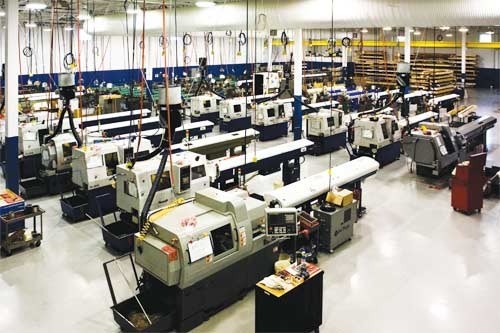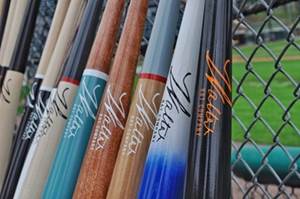Combining Old and New Technologies Pays Off
By pursuing a pragmatic growth policy that coupled advanced CNC Swiss technology with the speed and cost effectiveness of existing cam machines, Precision Plus (Elkhorn, Wis.) has thrived.
By pursuing a pragmatic growth policy that coupled advanced CNC Swiss technology with the speed and cost effectiveness of existing cam machines, Precision Plus (Elkhorn, Wis.) has thrived. Established in 1982 as a manufacturer of Swiss turned components, the company built a business around single-spindle cam operated Swiss screw machines. Delivering quality parts on time and at a reasonable price, a base of loyal customers was quickly established. Yet, the company managers were keen enough to realize that the rosy market conditions of the late 1980s wouldn’t last forever. Within a few years, the joint pressure of emerging technologies and increased outsourcing by original equipment manufacturers would turn the metalworking manufacturing market upside down.
“My father, Phil Reader, purchased Precision Plus in 1988,” explains President Mike Reader. At that time, 78 Tornos cam machines were turning out parts day and night. Joining his father in 1995, Mike Reader knew he had found a home. “To this day, I am energized by this place,” he says. “I have a deep respect for the craftsmanship that goes into the parts we produce.”
At the time, CNC technology was just beginning to alter the playing field; precision part manufacturers faced increased competition from shops in the United States and abroad. Aware that Precision Plus would need to become both more efficient and more productive, Mike traveled to Chicago for the 1996 IMTS. While there, he was struck by the productivity gains that could be achieved with magazine bar feeders.
“I questioned why we were not using them to run our cam machines over the weekend,” he says. Initially skeptical, some personnel questioned the practicality of mounting an expensive bar feed to a 30-year-old cam machine. Mr. Reader was persistent, and spindle usage jumped accordingly. “We noticed a huge productivity improvement on those machines right away,” Mr. Reader explains. “We were running lights out.”
That success crystallized in Mr. Reader a commitment to intelligent growth: using new technology to improve the core competencies of Precision Plus.
CNC technology, a subsequent productivity enhancing initiative, arrived for the first time in 2002. “In 2000 we had no CNC machines on the floor,” Mr. Reader says. “It was not who we were.” Faced with customers who were shipping simple jobs overseas to save pennies, or fractions of pennies per part, Mr. Reader and his team knew that they would need to expand into new markets to stay viable. Swiss CNC offered the possibility of contracts for parts with complicated features, more variety and smaller lot sizes. “We needed to move up the market to continue to grow,” Mr. Reader explains. “A solution that allowed us to produce turned parts with milled faces and cross features in one setup was needed.”
Already familiar with sliding headstock technology, Precision Plus purchased its first Swiss turn to produce a water meter component complete from barstock. “At the time, it was the most expensive machine by far that we had ever purchased,” Mr. Reader says. “I wanted to make sure that we ran it 24 hours a day to maximize our investment.”
A number of parts that the team felt could be made more profitably on the Swiss turn were transferred, as well. Of those, many required significant re-engineering to take advantage of the increased backworking capabilities of the Swiss machine. “With Swiss, you want to machine a part so that your main spindle and subspindle are cutting for roughly equal amounts of time,” Mr. Reader says. “To maximize the productivity available in the machine tool, we seek to keep both spindles cutting for roughly equivalent times.”
The Swiss turn delivered the expected benefits and more; a total of 11 more would be purchased in the next 6 years. In spite of that, Mr. Reader believed they were only scratching the surface of Swiss productivity. “We felt that we could make serious improvements with more cross working capability on the subspindle.” Actually getting a cross rotary attachment that was rugged enough for a production environment in a timely manner proved to be a struggle. Resourceful engineers themselves, they began to manufacture attachments in house, including complex live angle cross tools. “We just didn’t believe that a machine existed that offered the flexibility and live backworking capability that we needed until we saw the Tsugami SS20 concept machine at PMTS,” Mr. Reader says.
A long-time member of the PMPA, Precision Plus uses the association’s shows, conferences and message boards to keep abreast of the latest technology available. While visiting PMTS 2007 in Columbus, Ohio, Mr. Reader was introduced to Tsugami’s new SS platform that was designed specifically for the North American market. Impressed by its flexibility, he says, “The amount of tooling on the front and back spindles was perfect for our business.” The SS’s unique modular design and full compliment of driven tool positions allowed for much better use of the main and subspindle. The large tool capacity would allow most tools to remain resident, compressing setup and change-over time. “It really was the perfect job shop machine,” Mr. Reader says, who would go on to purchase one of the first production models of the lathe.
An early part to be processed on the new machine was a valve stem for a hot water heater that had been previously processed on an older CNC Swiss machine. Cut from 360 brass, the stem required turning and a small amount of milling on the face and sides. The back was a challenge, as it required heavy profile milling and substantial turning. With more backworking live tools, Mr. Shea was better able to fully engage both spindles and succeeded in reducing the cycle time from 2 min. 20 sec. to 1 min. 15 sec.—a savings of more than 47 percent. Impressed by this, the production team began to move other jobs to the SS where they could standardize tooling. “We were able to create a tooling layout that called for five turning tools and two driven tools to stay resident,” he says. Soon, Mr. Reader would commit to purchasing another three Tsugami SS machines to handle a variety of jobs including diesel emission control assemblies and hydraulic valves.
Mr. Reader’s future plans include a continued investment in Swiss technology that he hopes will open new markets. “Having an organization behind us that will help us grow is absolutely critical, and we were attracted to Rem Sales and Morris Group Inc. for this reason,” Mr. Reader explains. “Training was organized and comprehensive, service and installation have exceeded our expectations, and problem resolution has been excellent.” At the same time, Mr. Reader is planning for a strong cam business throughout the foreseeable future. Higher transportation costs and concerns about quality have caused some of the work that had been lost to overseas manufacturers to come back. “Customers want to be able to meet face to face with their vendors,” Mr. Reader says. “At the end of the day, we’ve got some very talented people who provide a significant advantage for those type of components.”
Related Content
Shop Optimizes its Swiss-Turning Flexibility
Paramount Machine uses various Swiss-type lathes, some with a B axis, to produce parts more effectively than it did on conventional chucker lathes. Today, nearly every job under 1.5 inches in diameter runs across those machines even if the batch size is a mere 5 pieces.
Read MoreGetting More Production From Swiss Turning Centers
Buying a new CNC Swiss turning center is a substantial investment. For the best return, look closely for capabilities that enable the best utilization of the machine.
Read MoreChoosing the Right Machine for Turned and Milled Medical Parts
The medical market is known for exceptionally tight tolerances and difficult materials, which means that selecting the proper machine is necessary to ensure a job is profitable.
Read MoreVideo: Why a Production Machine Shop Started a Baseball Bat Company
A 153-year-old manufacturer of precision, metal pins recently started a side business creating custom wooden baseball bats. The reasoning behind establishing this new company is intriguing, as is how it has helped create a stronger bond with the local community.
Read MoreRead Next
5 Aspects of PMTS I Appreciate
The three-day edition of the 2025 Precision Machining Technology Show kicks off at the start of April. I’ll be there, and here are some reasons why.
Read MoreA Tooling Workshop Worth a Visit
Marubeni Citizen-Cincom’s tooling and accessory workshop offers a chance to learn more about ancillary devices that can boost machining efficiency and capability.
Read MoreEmerging Leaders Nominations Now Open
Here’s your chance to highlight a young person in your manufacturing business who is on the path to be a future leader moving your company forward.
Read More









.jpg;maxWidth=300;quality=90)




.jpg;maxWidth=300;quality=90)









